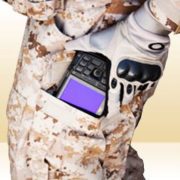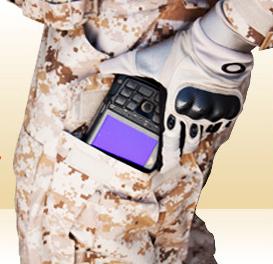 Recently the ARMY announced the cancellation of its current contract for the Joint Tactical Radio System (JTRS) Ground Mobile Radio System. Did its highly publicized plans for a battlefield smartphone have something to it?
Recently the ARMY announced the cancellation of its current contract for the Joint Tactical Radio System (JTRS) Ground Mobile Radio System. Did its highly publicized plans for a battlefield smartphone have something to it?
An uniformed person might think, “Sure, what does the ARMY need JTRS for, when they’re going for a smartphone?” Actually, the smartphone’s success depends on JTRS.
While security is usually described as the Number 1 concern for the battlefield phone, the lack of cellular service in potential combat zones has emerged as a major obstacle (Razorianfly). Almost all the proposed solutions for dealing with connectivity are partial. Some of the more innovative solutions include installing cellular equipment on blimps, UAVs, and aerostats. There’s even talk of a “cell tower in a suitcase.” Read more



 Recently, some clients asked AMREL to build an Operator Control Unit (OCU) for their Unmanned Ground Vehicle. No surprise there; we dominate that particular application. What was noteworthy was the specific form factor that they requested. They wanted it to be a wearable computer, worn on the wrist.
Recently, some clients asked AMREL to build an Operator Control Unit (OCU) for their Unmanned Ground Vehicle. No surprise there; we dominate that particular application. What was noteworthy was the specific form factor that they requested. They wanted it to be a wearable computer, worn on the wrist.

 . Put it in a cargo pocket or hold it in your hand, the ROCKY DB6 handheld is the smallest rugged computer with full Windows/Linux in the world. To get a FREE life size cut-out, just click
. Put it in a cargo pocket or hold it in your hand, the ROCKY DB6 handheld is the smallest rugged computer with full Windows/Linux in the world. To get a FREE life size cut-out, just click 
 Richard Lane, AMREL’s VP of Strategic Business Development, penned an interesting article about his rugged computing needs as an environmental scientist when he inspected on-shore /offshore oil production facilities. In the July 2010 issue of
Richard Lane, AMREL’s VP of Strategic Business Development, penned an interesting article about his rugged computing needs as an environmental scientist when he inspected on-shore /offshore oil production facilities. In the July 2010 issue of